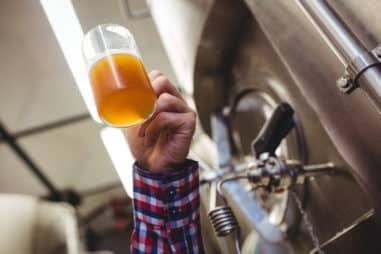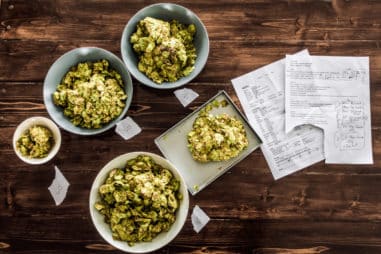If you need to royally level up your next brew or are just plain curious, you are in the right place. Run through this article to find out how these hops stack up from bottom to top.
What Are Known as German Noble Hops?
The German original four Noble Hops are Hallertau Mittelfrüh, Tettnang, Saaz, and Spalt. They have many child varieties so make sure you check the names carefully when sourcing them. Here are the common variations of spellings and names:
| Hop Variety | Common Names |
| Hallertau Mittelfrüh | Hallertauer Hallertau, Hallertau Hallertauer, Hallertauer Mittelfrüher |
| Tettnang | Tettnanger Tettnang, Tettnang Tettnanger |
| Saaz | Spalter Spalt, Spalt Spalter |
| Spalt | Saazer Saaz, Saaz Saazer, Czech Saaz, Žatec |
What Does Noble Hops Mean?
Noble Hops, from the keyword “Noble,” means that the hops are of superior and consistent quality. They are hops with characteristics born from natural evolution. The lack of human intervention is what makes them special.
Why Are They Called Noble Hops?
There is no technical reason you would call these hops “Noble.” It is more of an assigned distinction by the merchants and brewers back in the day. It was mostly used as a marketing strategy to command higher prices
A little hype to boost sales of an already excellent product is always a good thing.
Noble Hops Characteristics
The common theme with Noble Hops is their refined aroma. This is all thanks to their being packed with essential oil goodness.
Another peculiar trait of these regal hops is their somewhat low alpha acid content. This makes them favored for giving your brew some first-class hop fragrance, and then some.
German Noble Hops Flavor Profile
German Noble Hops have a shared flavor profile of spicy, herbal, flowery, and earthy. Each hop variety has some balance of these flavors.
What Do Noble Hops Taste Like?
Noble Hops imparts your beer with smooth hop bitterness. This is mostly from the limited presence of the alpha acids. Regardless, its array of other prominent flavors gets to stand out more. Spicy flavors, herbal, earthy, flowery, softly citrus, gentle sweetness, you name it, it has got it.
What Do Noble Hops Smell Like?
Our sense of taste is closely linked with our sense of smell so you will get more of the same. They are often interchangeable. Nevertheless, there are some accompanying scents like pine, eucalyptus, hay. These scents mostly are unique to nobles.
Beers With Noble Hops
Any beer that wants to emphasize hops will benefit from Noble Hops. On a general note, you can find these hops in Ales and Lagers. It is pretty much in beers that you want some oomph in the aromatics department. Also, it does wonders to give you a hop bitterness that goes down easy.
Lager With Noble Hops
Noble Hops work well with Pilsners, especially the Bohemian Pilsner. Helles and Bock beers also gain from these hops. Remember that these are the classic hops from olden times so they are in the original recipes of lager. In a contemporary setting, Stella Artois uses Saaz hops.
Ale With Noble Hops
Ales love Noble Hops so much that they can be found all over the landscape. Here are some of the ales you can get a hold of:
| Origin | Style |
| German | Altbier, Kolsch, Hefeweizen |
| Belgian | Saison, Abbey Ales, Belgian Pale Ale |
| American | Blonde Ale, American Wheat Beer, American Amber Ale |
IPA With Noble Hops
There are no restrictions when it comes to the use of Noble Hops in beer. However, they are not very efficient when it comes to meeting the IBU values of Indian Pale Ales. You will be needing more hops per gallon of wort to get any bitterness going for a pure Noble hop recipe. But if you insist, blending them with other more potent bittering hops should do the trick.
You would do better by sticking to the strength of these hops. Use them as an aromatic or flavor enricher.
How Do You Use Noble Hops?
There is really nothing special in preparing and using Noble Hops. You can homebrew them like any other hop. You simply chuck them in at the appropriate stage in your brewing. Then you boil them for the correct duration of time the recipe calls for.
If you are going to use them for their fragrance and flavor, put them at the end of the boil. Or you can try dry hopping.
Dry Hopping With Noble Hops
This is where Noble Hops truly shines. Dry hopping them maximizes the potential of your beer to get an intense flavor and aroma.
Put these hops in when your wort has cooled. Brewers typically add them in the primary fermentation and secondary fermentation stages. You could even try them during bottle conditioning, although not recommended.
Noble Hops for Bittering
Noble Hops are mostly used for adding flavor and fragrance, not bitterness. This is because of their naturally low alpha acid content. There are better bittering hops available with more bang for your buck. You can use Noble Hops for bittering but you must accept having a more mellow hop bitterness in your beer. Regardless, Tettnang has decent enough alpha acid to be used for both bittering and as an aroma hop.
Best Noble Hops
The most versatile Noble Hop award goes to Tettnang. It is the best in that regard. After all, it can work as a decent dual-purpose hop. But when it comes to brewer demand, Spalt takes the cake even though it has a low yield. The other Noble Hops are too fragile when it comes to infections. But then again, what matters most is how the brewer actually makes the ingredient shine.
When the Noble Hops go head-to-head, check out the tables below that indicate the “better” hop. Note that the flavors and aromas tend to overlap in most cases. You should try them yourself to know what goes well with what you want.
Hallertau Mittelfrüh vs. Tettnang
| Properties | Hallertau Mittelfrüh | Tettnang |
| Bittering Hop | NO | YES |
| Aroma/Flavor Hop | YES | YES |
| Alpha Acid | 3.5 % | 3.0 to 5.8 % |
| Resistance to wilt and mildew | NO | YES |
| Origin | Germany | Germany |
| Flavor/Aroma Character | Spicy, Herbal | Floral, Herbal, Citrusy |
Tettnang is used as a bittering hop even though the alpha acid is not really impressive.
Hallertau Mittelfrüh vs. Saaz
| Properties | Hallertau Mittelfrüh | Saaz |
| Bittering Hop | NO | NO |
| Aroma/Flavor Hop | YES | YES |
| Alpha Acid | 3.5 % | 2.5 to 4.5 % |
| Resistance to wilt and mildew | NO | NO |
| Origin | Germany | Czech Republic |
| Flavor/Aroma Character | Spicy, Herbal | Earthy, Mild Herb, and Mild Spice |
This is a close one, it all depends on your intended use.
Tettnang vs. Saaz
| Properties | Tettnang | Saaz |
| Bittering Hop | YES | NO |
| Aroma/Flavor Hop | YES | YES |
| Alpha Acid | 3.0 to 5.8 % | 2.5 to 4.5 % |
| Resistance to wilt and mildew | YES | NO |
| Origin | Germany | Czech Republic |
| Flavor/Aroma Character | Floral, Herbal, Citrusy | Earthy, Mild Herb, and Mild Spice |
Tettnang is showing why it is the champ, at least in specifications.
Tettnang vs. Spalt
| Properties | Tettnang | Spalt |
| Bittering Hop | YES | NO |
| Aroma/Flavor Hop | YES | YES |
| Alpha Acid | 3.0 to 5.8 % | 2.5 to 5.7 % |
| Resistance to wilt and mildew | YES | YES |
| Origin | Germany | Germany |
| Flavor/Aroma Character | Floral, Herbal, Citrusy | Herbal |
Spalt is a great contender for the throne, almost there but not quite. It can be used for bittering based on the numbers.
Saaz vs. Spalt
| Properties | Saaz | Spalt |
| Bittering Hop | NO | NO |
| Aroma/Flavor Hop | YES | YES |
| Alpha Acid | 2.5 to 4.5 % | 2.5 to 5.7 % |
| Resistance to wilt and mildew | NO | YES |
| Origin | Czech Republic | Germany |
| Flavor/Aroma Character | Earthy, Mild Herb, and Mild Spice | Herbal |
Spalt is on top of the other nobles, and rightfully so.








